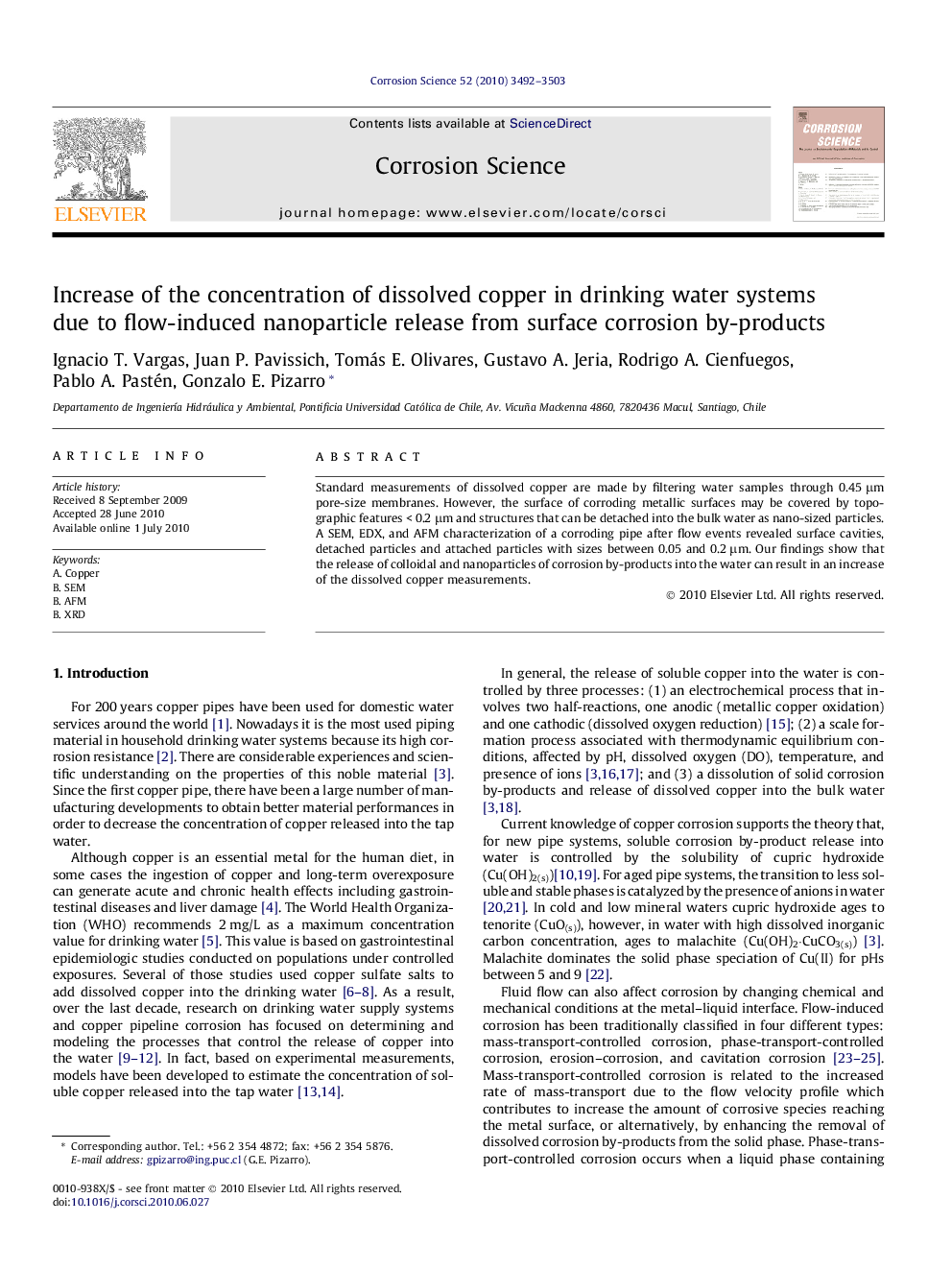| Article ID | Journal | Published Year | Pages | File Type |
|---|---|---|---|---|
| 1470846 | Corrosion Science | 2010 | 12 Pages |
Standard measurements of dissolved copper are made by filtering water samples through 0.45 μm pore-size membranes. However, the surface of corroding metallic surfaces may be covered by topographic features < 0.2 μm and structures that can be detached into the bulk water as nano-sized particles. A SEM, EDX, and AFM characterization of a corroding pipe after flow events revealed surface cavities, detached particles and attached particles with sizes between 0.05 and 0.2 μm. Our findings show that the release of colloidal and nanoparticles of corrosion by-products into the water can result in an increase of the dissolved copper measurements.
Research highlights► Hydrodynamics determine the release of Cu corrosion by-product nanoparticles ► Detached Cu corrosion by-product nanoparticles were identified as malachite ► Copper release models have to consider hydrodynamics within the pipes
